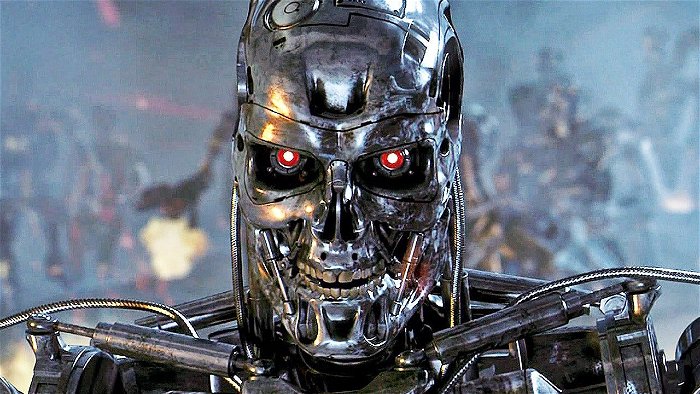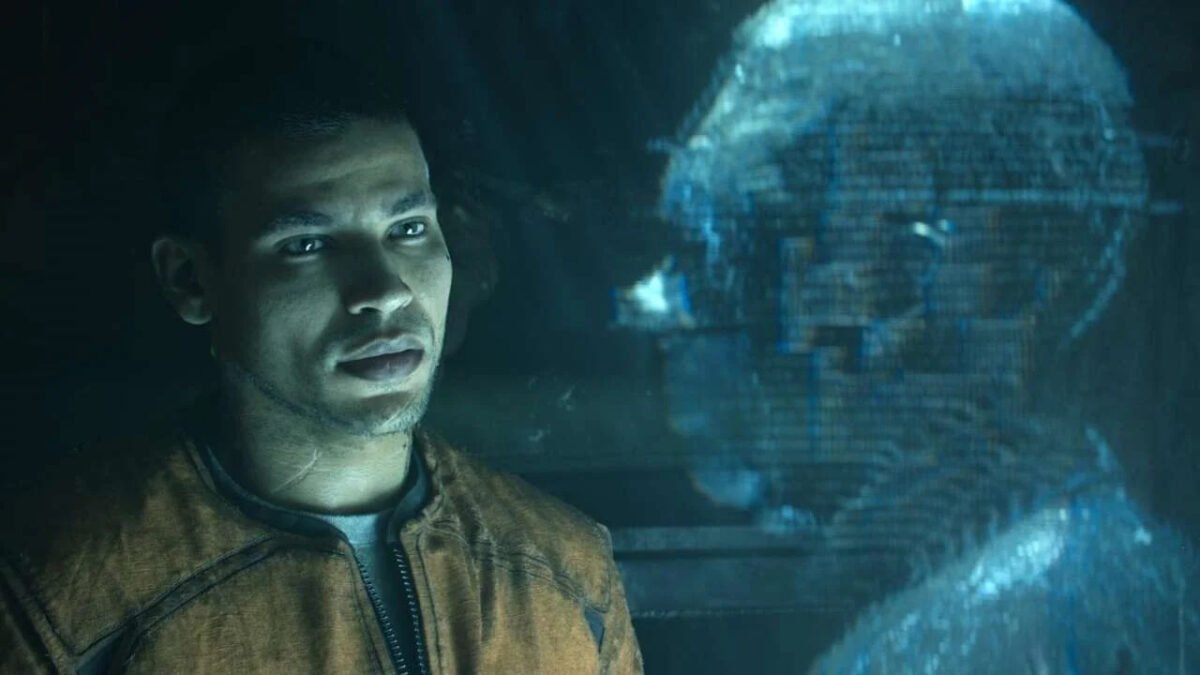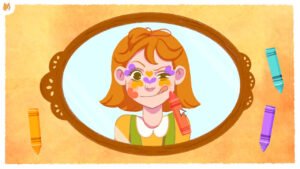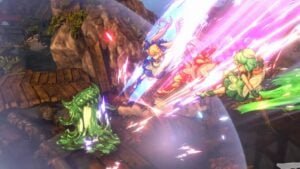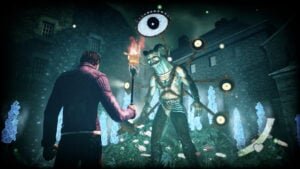Have you ever wondered who’s been behind all those amazing cinematic trailers for video games you love, such as Injustice 1 and 2, Mortal Kombat 11, Gotham Knights? Well, Plastic Wax would be the answer. They are an Australian VFX and CGI company, which has had over 20 years of getting their audiences very interested in the video game trailers they have crafted.
To lead such a creative tour-de-force in the CGI industry has been the founder of Plastic Wax, Nathan Maddams. He has had over 25 years of experience working and experimenting in the CGI space. Since 1997, Maddams has held the mantle as the studio’s creative director, overseeing each project with a critical eye for work filled with precision and panache.
Developing and specializing in the tech side of the CGI world has also been a staple at Plastic Wax, which Maddams had pioneered ahead of some of the other industry studios. He developed capture rigs and animation tools that were unheard of back in 2003. He was also ahead of the curve on 3D scanning to create digital assets, and most recently, innovating his own signature real-time virtual pre-visualization (pre-vis) system for the studio.
CGMagazine was able to virtually sit down with Maddams to discuss the latest projects from Plastic Wax like Gotham Knights, Shrapnel, and the upcoming sci-fi thriller game, The Callisto Protocol.

CGMagazine: What was the studio’s involvement with the cinematic trailer for The Callisto Protocol and What kind of conversations were happening in the storyboard room, in pre-vis?
Nathan Maddams: I think in the early stages, we had several kinds of different concepts that we came up with to give that teaser that introduction—that first kind of taste to the community of what’s coming. As you know, [The Callisto Protocol] was a spiritual successor to Dead Space. So, it was a pretty daunting task, but a really exciting one.
Initially, we started off spit balling, and sketching out different ideas that we felt touched on those kinds of important things we wanted to convey. And less is more, how do we tease without giving away too much? From there, we really went into boarding after that initial concept was agreed on, and it kind of developed from there. We definitely wanted to have something that kept that sense of isolation and desolation even though there were other people sort of present that.
It still very much had that element of Dead Space. Then, from there, we moved into pre-vis, where we just block the characters to the set we measured. At the same time, sets were being developed and built. We actually measured our mo-cap props, and then went on to the stage. This one was a little different because it was quite contained. We got onto stage with the actor, and we’re able to walk through the set. We’d walk through the shots and work out what we wanted to shoot, and how we wanted to approach it.
So, it was almost like a live pre-vis at that point. The development was happening in parallel, which was really fun and really exciting. Because normally what will happen is the script gets locked in, then the bones get done, and then the pre-vis gets done. And by the time you are watching, you are watching a shot being created in slow motion over several months. Whereas with this, it was a lot more interactive, and we could change and respond to things that were working, or we felt like needed to be tweaked as we were going. So that was a really unique, kind of interesting part of this project.
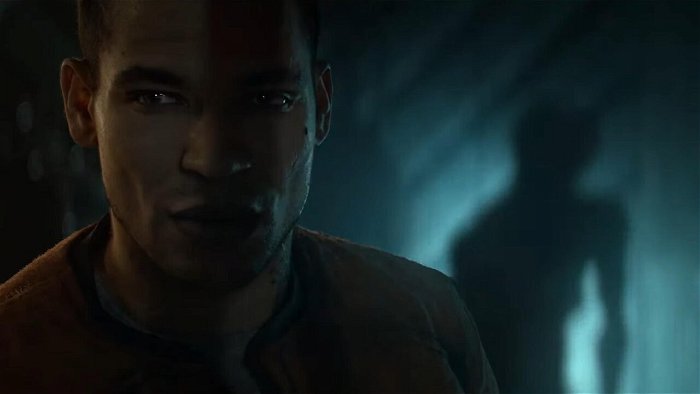
CGMagazine: Fascinating. When you were talking about isolation as being such a big element, I felt very claustrophobic imagining being in that prison cell. And then, taking up space with the hologram. Was that what you were going for, filling up that space and really adding to that crammed area?
Nathan Maddams: Yeah, I think it is a weird thing because you are trying to create, and especially if you look at things like Alien, and the older John Carpenter works. Or you look at [David] Fincher’s Alien 3, and some of those sorts of films—really early 80s, and 90s, and some late 70s horror films. One thing is that even if there are expansive environments, it still has this sense of you have nowhere to go, or gives you the illusion you’ve got somewhere to go, but really you don’t.
So, in this scenario, this person is in a cage, and they can’t get out. But that gives you the illusion of safety because you’re protected from what’s going on outside—a malfunctioning robot or the noises down the corridor that woke you up. But the reality is, there’s something far worse trapped inside with you. It was that duality where you felt cramped and claustrophobic, but there was a sense of safety, and then kind of pulling that sense of safety out.
I think that’s definitely something where spiritually, we wanted to have that type of claustrophobia. And sense of dread is the thing that something’s coming and that’s something that you’re going to have to deal with. The one thing I did like was immediately people were reacting like, ‘Oh, my goodness, this is the protagonist oh, cool. This is the guy for the game’ and then halfway through, they’re like, ‘oh, okay, no.’
But I think that’s something that through Glen Schofield, and the rest of the crew, that sensibility that comes through from their early work and definitely from the materials that we saw from The Callisto Protocol, even the early stages.
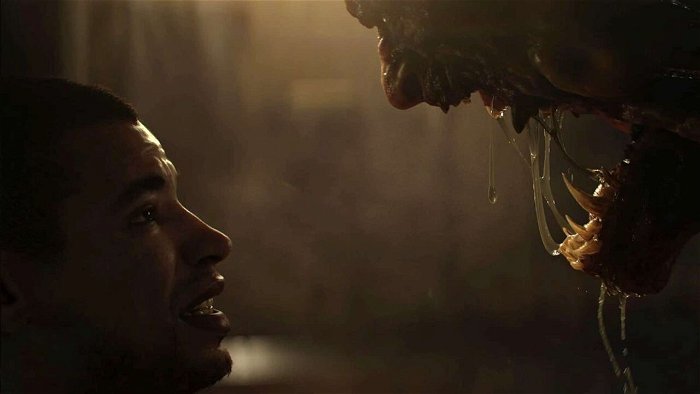
CGMagazine: What were some of the capabilities that you have been able to achieve with Unreal Engine 5 that you would not be able to achieve say 5-10 years ago?
Nathan Maddams: Things have moved at such a rapid pace. Obviously, hardware and software have come a long way. In tandem, one needed the other to progress. But I think now we just finished a project called Shrapnel, which is a first-person shooter that is coming out later on. But that one, we did a full stunt shoot on stage. We had the stunt coordinator from The Matrix; we had these brilliant stunt performers shooting zero-fire load weapons. And we had these massive props that we built that they could jump off and leap between buildings and things like that.
And from a technical standpoint, we were able to have smoke, dust, air and things like that—even in the pre-vis. So, even though it was early-stage props and sets, the performers and everyone could see what was happening on stage to get a sense of where the explosions would be going off. That would have been unheard of going back five years, and we’ve been doing this for quite a long time.
When we initially not so much stumbled into this, but originally, we were using a lot of the onstage pre-vis just because it gave you a better sense of cameras and framing, and you could move lights around, positive and negative space. And then of course, the ability to throw more polygons around, effects and things kind of started to evolve. I think [we’re] getting a lot closer to being able to get very close to final pixel on stage.
That’s something that I aspired to five years ago, but I didn’t think we would hit this sort of fidelity as quickly. That’s probably the biggest thing for me is just the amount of polygons we can throw around now. And how quickly you can explore lighting and change things as you go is pretty amazing as well. You can be more intuitive with the process.
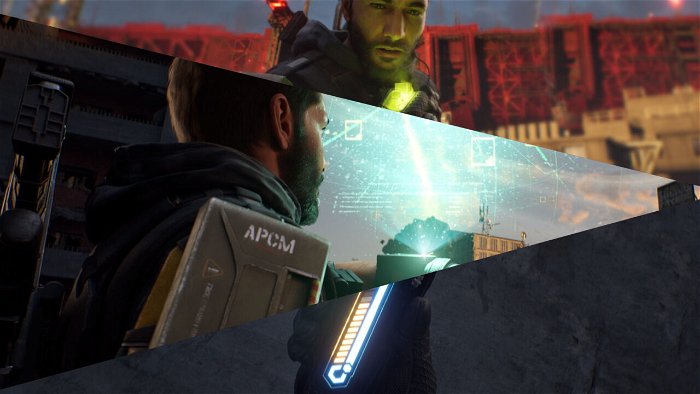
CGMagazine: Speaking on the evolving technologies, I was able to check out an XR volume at SCAD Atlanta. Seeing all that happening in real time, for shows like The Mandalorian, or films like Thor: Love and Thunder, do you see that also being blended into some of the work done at Plastic Wax?
Nathan Maddams: Yeah, I’d say there are some interesting projects coming up that are sort of bridging that gap. And I think there’s a lot of really interesting convergent technologies that are popping up, overlapping and allowing for different experiences and different things to branch off. It’s something…let’s just say it’s something we’re involved in—that’s probably the easiest way to put it. It’s a really exciting space.
I think a lot of the same technical skills about real time capture are very similar. We’re almost reversing the process in a way. I think for some of our own projects, we’ve actually almost done a reverse Mandalorian where your characters are CG, but the sets are live-action. And that departure is more from drone-based filming, and then bringing those cameras back into the scene.
There’s a lot of really interesting experimental things we’re playing with to look at different styles and different ways of approaching things. But I think having the tools there, the important thing to me is trying to take the restraints off the artists and try to give them things to play with and room to experiment and grow.
So, I think these new technologies have allowed for that and really taken away some of those things where you’d be shooting on green screen performers wouldn’t have any idea of what the shots were going to look like. I’d say that’s exciting, convergence of different technologies.
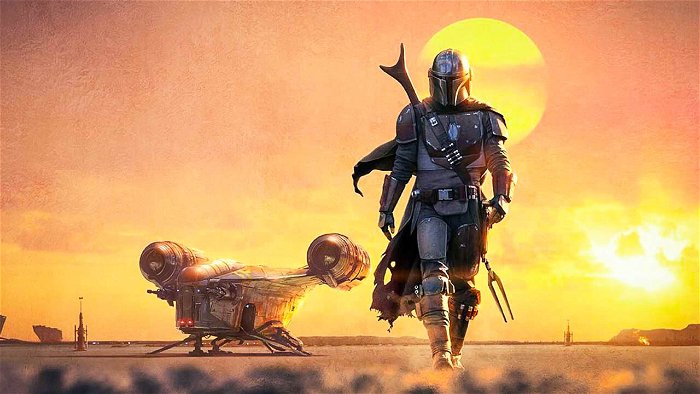
CGMagazine: This was a big question asked by a lot of aspiring VFX and CG artists, but, do you see that post-production is kind of waning as these real-time technologies become more prevalent?
Nathan Maddams: I don’t think so. I think it’s just changing; it’s evolving. It’s like going back —I’m trying to think what year this was—and I’m going to date myself here. But even going back to the early 2000s, let’s say where the next-gen consoles came out through those years and people were looking at pre-rendered cinematics and saying, ‘Oh, look at the graphical quality, they’re on par with each other.’ But of course, what happens is there’s the pre-rendered lifts, and that sort of tail-chasing exercise.
That said, the gap is much smaller now. I think there’s definitely room for pipelines that do eliminate a lot of that. We’re seeing that a lot in our work where there’s a much shorter time to final deployment of what we’re working on—or it allows you to iterate and kind of finesse. What ends up happening is you’re almost taking that time you would have spent in post and in doing all these other things, and you’re adding that to the creative, writing or some other area back into the pipeline.
I think for certain things, especially what we’ve been working on, I could say you could replace it without too many problems. But as an industry, I think [post-production] will be around for a while. I don’t think by tomorrow, compositing is going disappear—or something’s going to drastically change. I think that discipline will evolve. And I think what will happen is, what’s happening now from before, is they will just merge in a different way. So, those skill sets will be applied differently in different packages.
I think it’ll just be a change of the way that things work—even if you are offline rendering. For a lot of our projects, where we do offline render, we still use Unreal [Engine 5] for all the previews and all the initial lighting and setup. We’re getting something very close [to everything setup] anyway. And then, when you’re looking at them side by side, there are advantages to certain things, but I think it’s the gaps getting a lot closer.

CGMagazine: That makes a lot of sense. With Plastic Wax coming up on its 25 years in the industry, what has been your favourite project to work on?
Nathan Maddams: I think it’s a really hard question. For me, it’s almost like what’s my favourite film. I can look at it for different reasons and things that will appeal to me for one thing. And it’s something that really shows the calibre of artists that I’ve been lucky enough to work with—the variation of projects. We could have really stylized projects and photo-real projects. We’ve worked on Multiversus trailers, which have well-known IP—but really stylized.
I think it’s one of those things where I have projects that are near and dear to me for different reasons. And some of them may not be because they are the most well-known projects either, but it’s the one thing that keeps it exciting. We might go from a Mortal Kombat [trailer] to Civilization, where it’s action, gore and amazing photography. And then, we get to do something more heartfelt and more of an emotional journey through something. Having that contrast keeps it fresh and interesting for me.
I don’t think I’d have one project that I would say is my favourite one. Early in my career, I really enjoyed when we worked on the in-game cinematics for S.T.A.L.K.E.R.: Shadow of Chernobyl. That’s one I still have a closeness to because we used facial scanning and expression scanning, and developed our own rigs. We did all these crazy new lighting things and new hair; we really pioneered all this early stuff.
And then the game wasn’t released for two and a half years. It was meant to be released, but was [constantly] delayed. At the time, I think it was really, really cutting edge, doing these crazy things. From a tech and source material standpoint, I think that was a really exciting project to work on. But again, I think it’s that variation that makes it so hard to choose a favourite. But that’s what keeps it exciting for me.
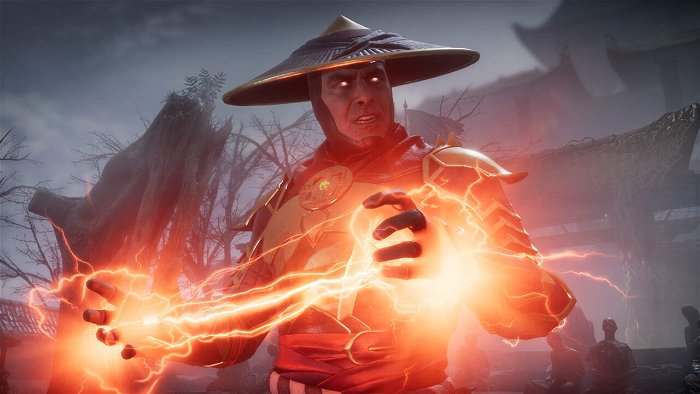
CGMagazine: Going back to the whole process of making trailers, what comes first—are you trying to create a narrative in a trailer that walks the audience through what the capabilities of the game are? Or more on what this storyline is, and then you add the extra emotion?
Nathan Maddams: I think a lot depends on the individual—the director or creative’s approach to it. One thing that’s super important is we will work on projects that we really either love the predecessor games, love the IP and love the idea. It has to be something that’s exciting, that we think we can do something interesting, and that we can bring something to the project.
As far as the process goes, we start very early trying to connect with the material and understand as much of the game as possible. Depending on the game, they’ll sometimes let us play really early builds to look around the environments and get a sense of it and look at a lot of the artwork. Also, we’re speaking to artists and creatives, and really trying to connect. I think it’s really important for us that we’re representing as truly as possible what’s in the game and what it’s all about.
I think that the perfect trailer, if you were to try to create this trailer as part of the process, we’d be really trying to look at the mechanics of the game, and what differentiates it, one of the things that the end user might grab on to and think is an interesting thing? There may be things in trailers that initially don’t seem like they’re not in the game too much, but they’re things that we try to weave in. So, the game mechanic has one element.
But more importantly, it’s the tone and feel of the world. Depending on whether it’s a teaser or a trailer, it’s giving enough information to get someone excited and interested and to know if this is the game that you want to invest your time in, and really get a sense of that—but enough that you want to know more, and you want to dig in.
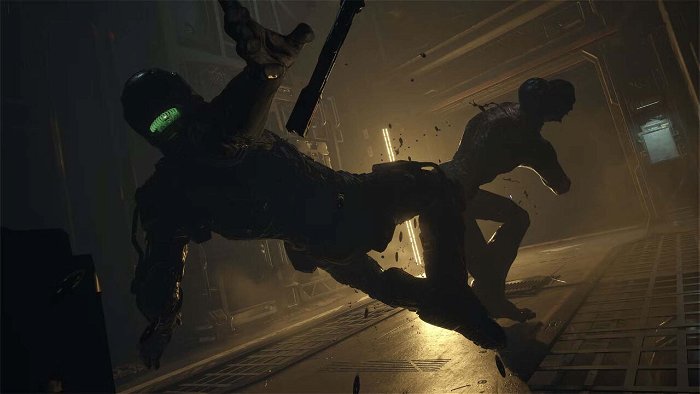
CGMagazine: I think that was perfectly worded. Was there anything else you that you wanted to add? Or some passing on of your wisdom and talents of over 20 years of being a creative director and everything VFX and CGI? Or maybe, for someone who’s trying to break out into VFX, what are some tips that you have now that you wish you would’ve known 20 years ago?
Nathan Maddams: Yeah, I think there are a couple of things. It really depends on if you want to be working in assets, you want to work in effects or you want to work in creative direction. I think it’s just immersing yourself in as much as you can, but also really trying to try to understand the things that have come before. Like when movies have connected with generations have anniversaries for like The Terminator and Fight Club.
I think going back and looking at the comics, films and the things that have inspired the generation that came before, we’re influencing everything now. Because the kids when I was a kid and the things that people were exposed to, are all starting to have this interesting thing where it would emerge from popular culture all at once. So, I think it’s looking at things that have come before and immersing yourself in things outside of gaming as well—whether it’s getting into literature and looking at film.
I mean, Unreal is a great entry point, because you can do a lot of stuff at home, and you can sort of start to play with lighting, animation and other different things. It’s absolutely great, and it does democratize things a lot more than when I was getting into it. It will take a long time to get to really craft something, but it also gives you that flexibility to do that. From a standpoint of if you were to apply for work or develop your own portfolio, I think the important thing there is to really keep it whittled down to your best few pieces of work.
That’s the one thing I wish someone had told me: You’ll have things that you love, for personal reasons, but may not be as visually strong or will stand on their own if they’re explained in detail. But those are the things that other people aren’t necessarily going to connect with. So, you want your strongest visual representations. Take a step back and analyze your work and work out what people are going to react more strongly to, and edit your portfolio down.
You’re better off having three or four amazing pieces of work than 50 random things because you’ll look through those beautiful things, and you’ll hit something which will give you a question mark. And then, it’ll sort of be like, ‘Oh, okay…well…you know.’ But then, that’s part of the editorial process and learning how to self-edit and get most out of the work.
